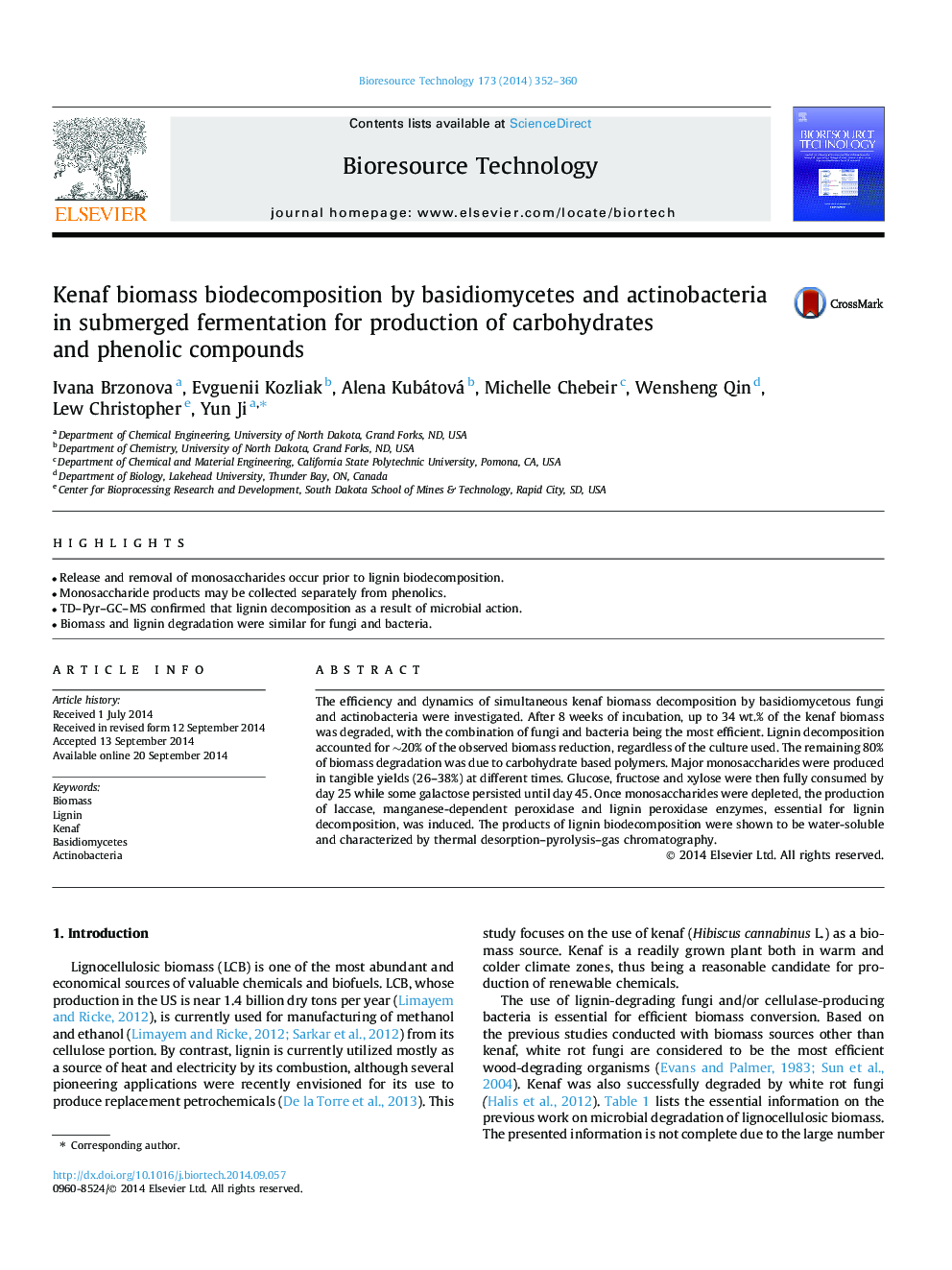| Article ID | Journal | Published Year | Pages | File Type |
|---|---|---|---|---|
| 7076352 | Bioresource Technology | 2014 | 9 Pages |
Abstract
The efficiency and dynamics of simultaneous kenaf biomass decomposition by basidiomycetous fungi and actinobacteria were investigated. After 8Â weeks of incubation, up to 34Â wt.% of the kenaf biomass was degraded, with the combination of fungi and bacteria being the most efficient. Lignin decomposition accounted for â¼20% of the observed biomass reduction, regardless of the culture used. The remaining 80% of biomass degradation was due to carbohydrate based polymers. Major monosaccharides were produced in tangible yields (26-38%) at different times. Glucose, fructose and xylose were then fully consumed by day 25 while some galactose persisted until day 45. Once monosaccharides were depleted, the production of laccase, manganese-dependent peroxidase and lignin peroxidase enzymes, essential for lignin decomposition, was induced. The products of lignin biodecomposition were shown to be water-soluble and characterized by thermal desorption-pyrolysis-gas chromatography.
Related Topics
Physical Sciences and Engineering
Chemical Engineering
Process Chemistry and Technology
Authors
Ivana Brzonova, Evguenii Kozliak, Alena Kubátová, Michelle Chebeir, Wensheng Qin, Lew Christopher, Yun Ji,
